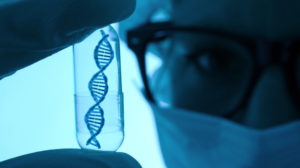Biological aging may be attributed to several causes, including telomere shortening, oxidative stress, side reactions, glycation, mutations, and intra and extracellular aggregation of proteins. Most multicellular organisms age due to the increment of these damages and other deleterious changes over time. These damages lead to the development of pathological conditions and, as a consequence, to death.
These changes are often known to be irreversible. Living organisms, including humans, evolved fully differentiated, irreplaceable cells (e.g., neurons) and structures (e.g., skeleton). Hence, deterioration or loss of cells and structures should lead to these organisms’ inevitable aging, although some cells may escape this process.
One study conducted in vivo concludes that partial reprogramming erases cellular markers of aging in mouse and human cells. A new form of gene therapy produced a remarkable rejuvenating effect in mice. Six weeks after treatment, the animal subjects looked younger, had straighter spines and improved cardiovascular health, healed quicker when injured, and observed to have an increased lifespan of 30%.
The resolution of this question holds promise for dramatically extending lifespan.
Read the original publication of this study here: [ Aging and rejuvenation – a modular epigenome model ]
This study aimed to discuss the different views of aging considered an epigenetic mechanism, the epigenetic clock’s role in the process, and rejuvenation as an interventive approachable to set back epigenetic age.

Aging and rejuvenation – a modular epigenome model
Biological age refers to the functional and structural status of an organism at a given age.
According to an Aging-US report, aging is long considered an irreversible process, of which interventions focused mainly on slowing the aging process.
Meanwhile, breakthrough discoveries like cell reprogramming and animal cloning have revolutionized the understanding of postnatal development, giving rise to the emerging view that the driver of aging is the epigenome.
The discovery significantly supported the idea that the epigenome is the driver of aging that DNA methylation (DNAm) at specific CpG sites could be used as a highly accurate biomarker of age defined by the Horvath clock algorithm, which gives a measurement of biological age that can be used in a plethora of cell types.
Epigenetic rejuvenation strategy reveals to what extent biological age can be set back by making the clock tick backward. Reprogramming strategies may be achieved in vitro and in vivo, offering opportunities for rejuvenation in the context of whole organisms.
This study presented initial evidence suggesting that when the clock is forced to tick backward in vivo, it can only drag the phenotype to a partially rejuvenated condition.
Nevertheless, it would be premature to draw firm conclusions from the modest experimental results so far documented. The clear thing is that epigenetic rejuvenation by cyclic partial reprogramming or alternative non-reprogramming methods holds the key to understanding the epigenome’s mechanism that drives the aging process and arresting or even reversing organismal aging.
Takeaways:
- Reprogramming strategies may be accomplished both in vitro and in vivo, which offers opportunities for rejuvenation in whole organisms.
- This study suggests that epigenetic rejuvenation by cyclic partial reprogramming or alternative non-reprogramming strategies holds to understanding the mechanism by which the epigenome drives the aging process and arresting or even reversing organismal aging.
- Epigenetic rejuvenation can be a strategy to reveal to what extent biological age can be set back by making the clock tick backward.
You can read the original publication of this study here: [ Aging and rejuvenation – a modular epigenome model ]





